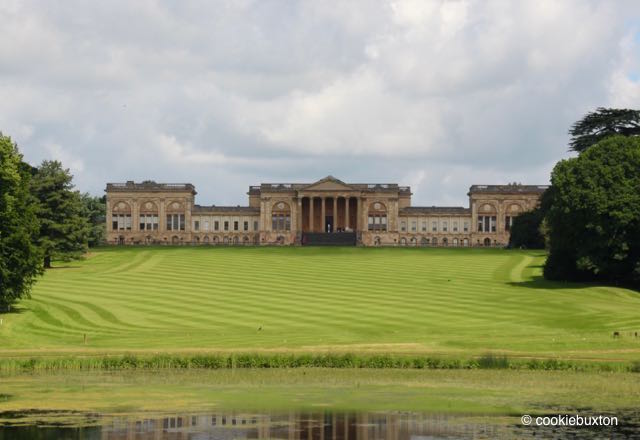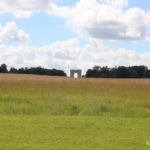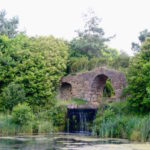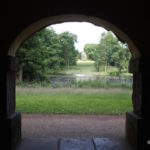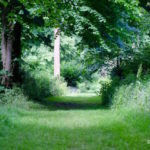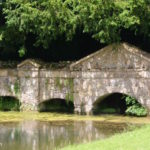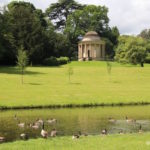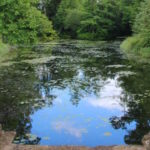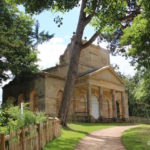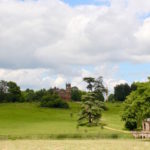Stowe House and Garden, England
Stowe House and Garden
Georgian and Regency periods in garden history are fascinating to me. I am charmed by England’s famous Stowe House and Garden, which includes 250 acres of gorgeous parklands. Stowe House, where construction was first begun in 1676, is situated in Buckinghamshire, England. Privately owned as Stowe School since 1923, Stowe’s landscaped parklands and outlying architectural assets were bequeathed by the School to the National Trust in 1989, resulting in significant strides in restoration of the historic structures and garden features throughout the property.
First designed as an English Baroque garden, Stowe Garden evolved in the mid-1700s into one of the famous Capability Brown landscape gardens that are widely known and cherished today, notwithstanding the influences of other remarkable landscape designers and gardeners over its long history. Its original features of parterres and other formal garden structures have long since disappeared, but the features of Brown’s mid-18th century design are strikingly evident, matured and enhanced by the passage of time.
Stowe Garden bears the trademarks of Sir Lancelot “Capability” Brown’s style and thinking. Hired as the Stowe head gardener in 1741, Brown shaped and transformed the Stowe garden into a landscaped parkland throughout the decade of his tenure before he left to expand his career elsewhere. He was responsible for the Stowe Garden’s evolution into the natural, park landscape that we see today. The park also contains close to 30 structural assets – Roman-style temples and statuary and grottos to entertain and intrigue visitors – that were so much a part of design culture in late 1700s and early 1800s.
The Garden’s architectural structures, revealed in glimpses and gradual views and sightlines opening as one walks around the property, speak as much to the personal whims and status of the prior property owners as they do to particular schools of landscape design prevalent over the last three centuries.
Stowe Garden Under National Trust Care
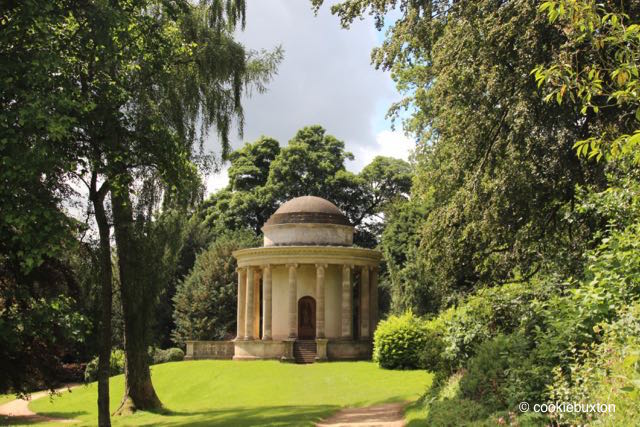 The grounds of Stowe House have been under the care of the British National Trust now for almost 30 years, which has greatly benefitted the community. I visited with my National Trust membership pass in hand on a day when there happened to be a triathlon competition underway. Stowe Garden was a hub of activity with guests coming and going, and competitors marshalling near the lake for their next events in Stowe Park. Athletes were completing their swimming segment as I walked around Octagon Lake, and, later, I saw many of them again running along the pathways in the Stowe property, and through the meadow north of the Palladian Bridge. It was gratifying to see this modern use of and access by the public to the historic properties, and my interest rose as I learned more about the National Trust’s efforts and those of the Stowe School.
The grounds of Stowe House have been under the care of the British National Trust now for almost 30 years, which has greatly benefitted the community. I visited with my National Trust membership pass in hand on a day when there happened to be a triathlon competition underway. Stowe Garden was a hub of activity with guests coming and going, and competitors marshalling near the lake for their next events in Stowe Park. Athletes were completing their swimming segment as I walked around Octagon Lake, and, later, I saw many of them again running along the pathways in the Stowe property, and through the meadow north of the Palladian Bridge. It was gratifying to see this modern use of and access by the public to the historic properties, and my interest rose as I learned more about the National Trust’s efforts and those of the Stowe School.
Seeing the swimmers traversing the lake, with a stone temple behind them, and the gorgeous view of the house and landscape in the distance, it felt like I was in some “back to the future” moment, having just returned from centuries ago. People were golfing on the course laid out in front of the house; I peered through the chain-link fence at the school’s tennis courts; the school at Stowe House, having completed its term, had hosted a student graduation event on the weekend and tents and band equipment were being removed from behind the house where the celebrations took place. Visitors like myself meandered through Stowe House on a guided tour, learning about past owners and the history of the school it was today. Then I headed back outdoors again to explore the landscape and its impressive garden features.
It would have been interesting to see the house at Stowe in its “glory days”, filled with treasures and considered one of the finest homes in England.
The backers of the School were originally solely responsible for halting the decline of Stowe and restoring and repurposing it as a place for education. The School has invested deeply in maintaining and restoring the Stowe House and the accompanying School properties. The work undertaken by the National Trust is directed towards the larger property, conserving and restoring its remarkable architectural assets and famous landscaped grounds.
The combined acts of converting Stowe, with its lovely tracts of land and gorgeous examples of architecture, into a school and then the School donating the property to the National Trust and opening to the public, have given people a truly remarkable gift. History and architectural beauty and customs of by-gone eras are available for all of us to see and to better understand. I am especially appreciative of the army of gardeners and household staff who maintain this legacy property for citizens from all walks of life to experience and appreciate.
Resource: View the National Trust’s web page featuring Stowe Gardens. There is a video of the garden embedded on the landing page.
Text and Images: Copyright Nadine Kampen / cookiebuxton
Photograph location: Stowe House and Garden, Buckinghamshire England (July 2016)
Map: Courtesy of Google Maps
Cookie Buxton Photograph Gallery of Stowe House and Garden
Click on any image to enlarge for viewing. Click again on the image to advance the series in large format.
- Stowe viewed from Lake
- Stowe’s Corinthian Arch
- Stowe House and Garden
- Stowe’s artificial ruins and cascade
- Ruins and cascade at Stowe
- Stowe’s Temple of Virtues
- Lake view of Stowe’s Temple of Ancient Virtues
- View of Octagonal Lake at Stowe
- Palladian Bridge viewed from Lake at Stowe
- Wild roses at Stowe
- Flowers at Stowe Garden
- Pathway at Stowe Garden
- Pink roses at Stowe Garden
- A place to rest at Stowe Garden
- Rotunda at Stowe Garden
- View of Stowe Garden Rotunda from Golf Course
- South facade of Stowe House
- Climbing roses at Stowe
- View of Corinthian Arch from south side of Stowe House
- Medici Lion at Stowe House
- Urns along front of Stowe House
- Shady walk in Stowe Garden
- Stowe’s Grenville Column
- Stowe’s Temple of Ancient Virtue
- Front entrance of Stowe House
- Equestrian statue of King George I at Stowe House
- Reading room in Stowe School Library
- Library at Stowe
- View of Corinthian Arch through front pillars at Stowe
- Stowe’s Marble Saloon Dome
- Ceiling detail at Stowe House
- Long the waterside at Stowe
- River view of Stowe’s Temple of Ancient Virtues
- Stowe’s Gothic Temple
- Stowe’s Palladian Bridge
- Waterway at Stowe
- Stowe’s Temple of Friendship
- Architectural features at Stowe Landscape
- Sheep on the grounds at Stowe
